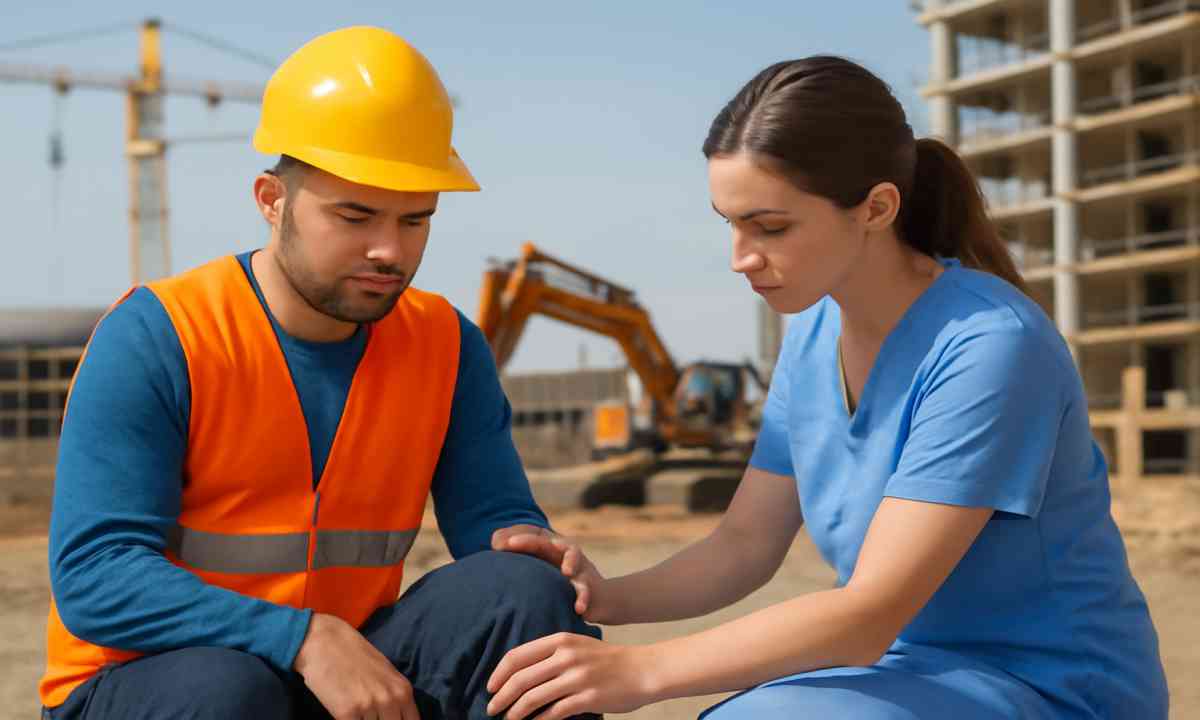Often busy centers of activity, construction sites feature workers in great labor, machine activities, and complex jobs requiring physical effort. Sadly, such labor brings unavoidable injury risk. The construction sector really ranks among the highest for workplace injuries on a regular basis, according to the U.S. Bureau of Labor Statistics. Physical therapy in construction accidents becomes even more important as it helps workers to return to their responsibilities and improve their quality of life. This essay will investigate the key role physical therapy plays in the recovery and rehabilitation of workers hurt on construction sites.
Construction Accident Frequency and Physical Therapy’s Function
Unsafe working conditions, insufficient safety precautions, human mistake, and the physical demands of the job all combine to cause many construction accidents. From shattered bones and fractures to sprains, strains, and even more serious injuries including spinal cord damage, these events can cause a range of injuries. Physical therapy is a crucial part of the rehabilitation process in such situations.
Physical therapy in construction accidents is a vital intervention that enables hurt workers to recover movement, strength, and function. Targeted exercises, manual treatment approaches, and ergonomic training tools help to rehabilitate by lowering pain, enhancing mobility, and preventing future injuries. For many wounded construction workers, physical treatment not only restores their capacity to work but also enhances their general well-being.
The Rehabilitation Process: How Physical Therapy Helps?
The first course of action usually involves medical treatment to stabilize the injuries when someone is hurt on a construction site. The road to recovery usually includes physical therapy following first treatment. With the main aim of restoring function and improving mobility, the method is customised to the particular requirements of the patient and their injuries.
To assist people recover their pre-injury levels of activity, physical therapists combine therapeutic exercises, stretching, and strengthening programs. The American Physical Therapy Association (APTA) claims physical therapy may increase general body function, reduce pain, and change movement patterns (APTA, 2020). In the construction sector, where physical demands are great and the worker’s ability to complete tasks quickly is vital for their living, these advantages are particularly noteworthy.
Injury Prevention and Pain Management
Managing pain and preventing more injury are two fundamental components of physical therapy following construction accident. Often, workers who have suffered an accident may acquire chronic pain from scar tissue development, muscular weakness, or faulty healing. Physical therapists assist in breaking down adhesions and enhancing circulation by means of manual treatment and tailored exercises, hence lowering discomfort and swelling.
Apart from treating current problems, physical therapists guide employees on correct body mechanics and ergonomics. Therapists help employees to complete their duties safely and reduce the probability of future accidents by teaching methods that prevent needless body strain. In construction, where the physical character of the labor predisposes people to musculoskeletal injuries over time, this proactive attitude to injury prevention is especially crucial.
Related Article: Best Rated Physical Therapy NYC
The Emotional Impact of Construction Accidents and the Role of Physical Therapy
One must first recognize the emotional price building accidents can cause for employees. Many people may experience anger, worry, or even sadness while they heal from an accident that has removed them from their employment and daily routine. Physical therapy is not only about treating the body; it also helps to handle the mental side of recovery.
By providing motivation, direction, and a feeling of empowerment, physical therapists act as emotional support for their patients. Though arduous, the rehabilitation process provides a planned road to recovery, hence inspiring personnel to overcome their challenges. Emotional assistance can be just as important as the physical therapy itself; it helps people recover confidence in their skills and perspective on life.

Long-Term Benefits of Physical Therapy in Construction Accidents
The long-term benefits of physical therapy in construction accidents extend beyond only the quick rehabilitation of the worker. Successful rehabilitation can greatly lower the chance of re-injury, hence enhancing the worker’s capacity to carry on their job safely for years to come. A study published in The Journal of Occupational Rehabilitation found that employees who follow construction-related injuries with thorough physical treatment programs are less likely to suffer long-term disability or need more surgeries (Leland et al., 2017).
Moreover, physical therapy in construction accidents improves workers’ general health and well-being. Essential for preserving best performance in physically demanding occupations, it helps to enhance cardiovascular health, flexibility, and strength. Proper rehabilitation allows construction workers to return to their jobs with better physical condition, less discomfort, and greater capacity to safely and effectively carry out their duties.
Conclusion: An Essential Component of the Recovery Process
Ultimately, physical therapy in construction accidents is essential for enabling employees to recover from injuries, avoid future damage, and return to work with improved physical and emotional well-being. The rehabilitation process offers assistance and encouragement for workers to conquer obstacles, hence addressing the psychological components of healing as well as regaining physical function. Physical therapy stays a foundation of worker recovery and rehabilitation since construction sites remain high-risk settings for accidents. Injured workers who include physical therapy into their rehabilitation process are given the chance to rehabilitate and go back to work, therefore enabling them to keep contributing to the field and preserve their quality of life.
